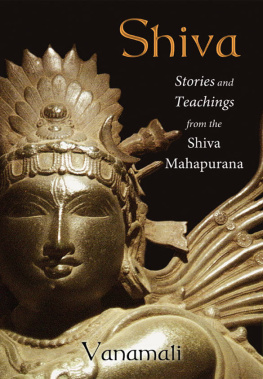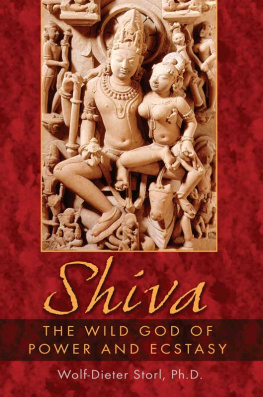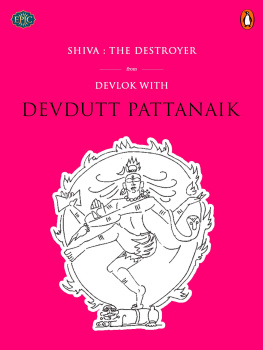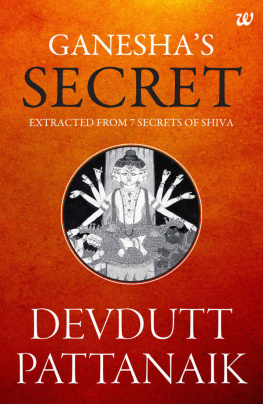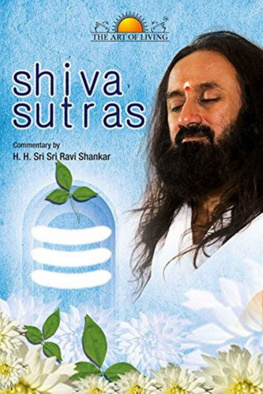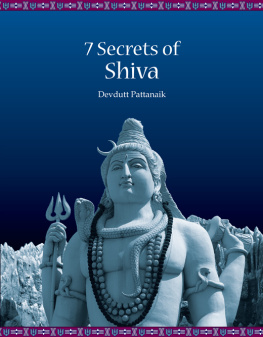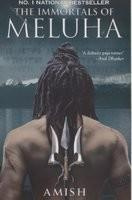Siva - Shiva: Stories and Teachings from the Shiva Mahapurana
Here you can read online Siva - Shiva: Stories and Teachings from the Shiva Mahapurana full text of the book (entire story) in english for free. Download pdf and epub, get meaning, cover and reviews about this ebook. City: Rochester, Vermont, year: 2013, publisher: Inner Traditions/Bear & Company, genre: Religion. Description of the work, (preface) as well as reviews are available. Best literature library LitArk.com created for fans of good reading and offers a wide selection of genres:
Romance novel
Science fiction
Adventure
Detective
Science
History
Home and family
Prose
Art
Politics
Computer
Non-fiction
Religion
Business
Children
Humor
Choose a favorite category and find really read worthwhile books. Enjoy immersion in the world of imagination, feel the emotions of the characters or learn something new for yourself, make an fascinating discovery.
- Book:Shiva: Stories and Teachings from the Shiva Mahapurana
- Author:
- Publisher:Inner Traditions/Bear & Company
- Genre:
- Year:2013
- City:Rochester, Vermont
- Rating:4 / 5
- Favourites:Add to favourites
- Your mark:
Shiva: Stories and Teachings from the Shiva Mahapurana: summary, description and annotation
We offer to read an annotation, description, summary or preface (depends on what the author of the book "Shiva: Stories and Teachings from the Shiva Mahapurana" wrote himself). If you haven't found the necessary information about the book — write in the comments, we will try to find it.
Shiva, the most ancient and complex deity of the Hindu pantheon, has been portrayed in many contrasting lights: destroyer and benefactor, ascetic and householder, wild demon slayer and calm yogi atop Mount Kailash. Drawing from the Hindu sacred text the Shiva Mahapurana--said to be written by Shiva himself--Vanamali selects the essential stories of Shiva, both those from his dark wild side and those from his benevolent peaceful side. Vanamali discusses Shivas many avatars such as Shambunatha and Bhola, as well as Dakshinamurti who taught the shastras and tantras to the rishis. She explores Shivas relationships with Durga, Shakti, Sati, and Parvati and with his sons Ganesha and Kartikeya. Examining Shivas acceptance of outsiders, Vanamali explains why ghosts and ghouls are his attendants and why his greatest devotees are demon kings, like Ravana. She includes famous Shiva stories such as the Descent of the Ganges and the Churning of the Ocean as well as those that reveal the origin of the festival of lights, Diwali; his creation of the cosmic couple or hierogamos; and how Shiva and Parvati taught the world the secrets of Kundalini Shakti. The author also draws upon Shaivite teachings to illustrate the differences between Western science and Vedic science and their explanations for the origins of consciousness. Integrating Shivas two sides, the fierce and the peaceful, Vanamali reveals that Shivas form depends on the needs of the devotee. Understanding his teachings allows one to see through the illusions at the root of all grief and alienation in human life, for Shiva is the wielder of maya who does not fall under its spell. While Ganesha is known as the remover of obstacles, Shiva is the remover of tears Read more...
Abstract: The traditional understanding of Shiva told through stories and teachings from the Shiva Mahapurana Explains Shivas contradictory forms, such as destroyer or benefactor, and how his form depends on the needs of the devotee Reveals how Shivas teachings allow one to see through the illusions at the root of all grief and alienation in human life Explores Shivas relationships with Durga, Shakti, Sati, and Parvati and with his sons Ganesha and Kartikeya Shiva, the most ancient and complex deity of the Hindu pantheon, has been portrayed in many contrasting lights: destroyer and benefactor, ascetic and householder, wild demon slayer and calm yogi atop Mount Kailash. Drawing from the Hindu sacred text the Shiva Mahapurana--said to be written by Shiva himself--Vanamali selects the essential stories of Shiva, both those from his dark wild side and those from his benevolent peaceful side. Vanamali discusses Shivas many avatars such as Shambunatha and Bhola, as well as Dakshinamurti who taught the shastras and tantras to the rishis. She explores Shivas relationships with Durga, Shakti, Sati, and Parvati and with his sons Ganesha and Kartikeya. Examining Shivas acceptance of outsiders, Vanamali explains why ghosts and ghouls are his attendants and why his greatest devotees are demon kings, like Ravana. She includes famous Shiva stories such as the Descent of the Ganges and the Churning of the Ocean as well as those that reveal the origin of the festival of lights, Diwali; his creation of the cosmic couple, or hierogamos; and how Shiva and Parvati taught the world the secrets of Kundalini Shakti. The author also draws upon Shaivite teachings to illustrate the differences between Western science and Vedic science and their explanations for the origins of consciousness. Integrating Shivas two sides, the fierce and the peaceful, Vanamali reveals that Shivas form depends on the needs of the devotee. Understanding his teachings allows one to see through the illusions at the root of all grief and alienation in human life, for Shiva is the wielder of Maya who does not fall under its spell. While Ganesha is known as the remover of obstacles, Shiva is the remover of tears
Shiva, the most ancient and complex deity of the Hindu pantheon, has been portrayed in many contrasting lights: destroyer and benefactor, ascetic and householder, wild demon slayer and calm yogi atop Mount Kailash. Drawing from the Hindu sacred text the Shiva Mahapurana--said to be written by Shiva himself--Vanamali selects the essential stories of Shiva, both those from his dark wild side and those from his benevolent peaceful side. Vanamali discusses Shivas many avatars such as Shambunatha and Bhola, as well as Dakshinamurti who taught the shastras and tantras to the rishis. She explores Shivas relationships with Durga, Shakti, Sati, and Parvati and with his sons Ganesha and Kartikeya. Examining Shivas acceptance of outsiders, Vanamali explains why ghosts and ghouls are his attendants and why his greatest devotees are demon kings, like Ravana. She includes famous Shiva stories such as the Descent of the Ganges and the Churning of the Ocean as well as those that reveal the origin of the festival of lights, Diwali; his creation of the cosmic couple or hierogamos; and how Shiva and Parvati taught the world the secrets of Kundalini Shakti. The author also draws upon Shaivite teachings to illustrate the differences between Western science and Vedic science and their explanations for the origins of consciousness. Integrating Shivas two sides, the fierce and the peaceful, Vanamali reveals that Shivas form depends on the needs of the devotee. Understanding his teachings allows one to see through the illusions at the root of all grief and alienation in human life, for Shiva is the wielder of maya who does not fall under its spell. While Ganesha is known as the remover of obstacles, Shiva is the remover of tears
Siva: author's other books
Who wrote Shiva: Stories and Teachings from the Shiva Mahapurana? Find out the surname, the name of the author of the book and a list of all author's works by series.

